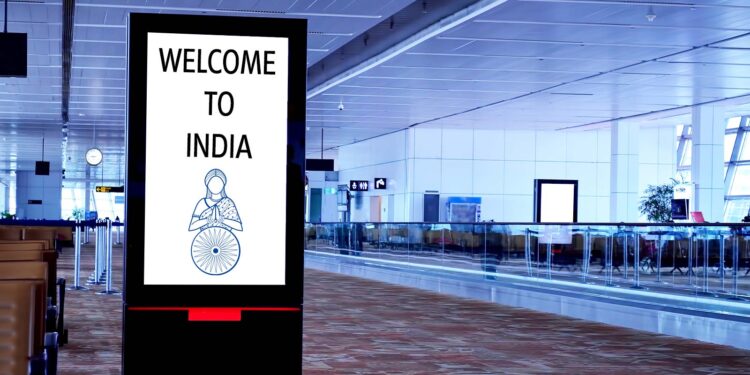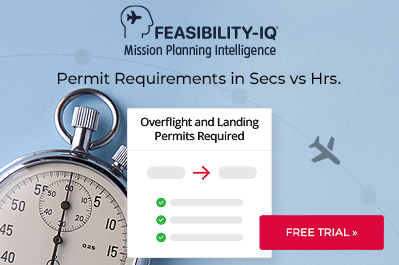Business Aircraft Ops to India: Permit Considerations

This business aviation blog post is part of a series on operating in India and continues from our last article: “Business Aircraft Ops to India: CIQ Requirements.”
While permit lead times for India have reduced over recent years there are certain regulatory nuances to consider during the business aviation trip planning process. Your 3rd-party provider and local ground handler both provide essential services in terms of planning and executing a smooth and successful operation to India.
The following is an overview of what you need to know:
1. India landing and overflight permit requirements
All aircraft traveling to India require landing permits, regardless of the type of flight. Official permit lead time is three business days for destination stops and one business day for overflight or technical stops, including fuel uplift and crew rest. Landing permit lead time, previously, had been seven days, so this is a great improvement for business aircraft operators. Be aware that if you’re arriving from a Prior Reference Country (PRC) — such as China, Afghanistan, Pakistan or Somalia — landing permits take seven business days to process and overflight permits require three business days. India Directorate General of Civil Aviation (DGCA) is strict on lead times for operations coming from PRC countries.
2. Short notice permits
With the exception of air ambulance permits, the DGCA is very strict in adhering to official permit lead times. In cases of air ambulance operations, lead times range from three to four hours, during business hours, to six to seven hours during nights/weekends/holidays. Air ambulance operators must provide the name of the patient, the hospital where the patient will be treated (or is coming from), as well as the name of the doctor treating the patient.
3. DGCA hours
DGCA operates 1000-1800 local Monday-Friday, and they’re closed on weekends/holidays. A duty officer is available outside normal operating hours to deal with emergency situations, such as air ambulance permits.
4. Permit requirements
Information and documentation requirements are the same for private non-revenue and charter (non-scheduled commercial) flights. The only difference is that private non-revenue flights may have no more than 14 passengers onboard while charter operations do not have this limitation. However, if the number of passengers onboard a charter operation exceeds 14, a special clearance from the Ministry of Tourism is needed to operate as it’s considered a tourist charter flight. Operators must provide complete aircraft information and schedule—together with full passenger/crew details including passport numbers, expiration dates and visa information and the flight routing. If a passenger does not have a required visa you’ll need to let DGCA know that it’s been applied for and that details will be provided later. As cabotage remains a large issue in India, DGCA needs to know accurate passenger count for each leg. On day of operation, air traffic control (ATC) will check that the passenger/crew counts match what was approved on the permit. If there’s a discrepancy your flight plan will not be accepted, and both pilot in command and the ground handler will need to communicate with ATC to clear the situation.
5. Permit processing
Permits for India are processed by the Air Transport Department, a part of DGCA. When applying for permits or revisions, your ground handler or representative must personally visit the DGCA office to submit the request. Permit confirmations are not issued until after 1600 local daily, and the ground handler or representative must go to the DGCA office to obtain this.
In the case of diplomatic flights all permits are processed via the Ministry of Foreign Affairs.
6. Permit related charges
DGCA does not charge a fee for landing or overflight permits. Your ground handler or representative, however, usually invoices a permit facilitation fee. Navigation charges for overflying India are billed to operators at a later date. However, if you overfly and land in India, you’ll need to settle navigation charges at the airport, and the ground handler can assist you with this.
7. Additional permit considerations
No aircraft documentation needs to be submitted when making application for landing or overflight permits. Although not a requirement, it’s recommended that operators provide a local business contact with landing permit request. Be mindful that “W” airways should be avoided as these are meant to be for Indian-registered commercial flights. DGCA will consider a routing using “W” airways if there’s no other practical option. Landing and overflight permits for India are valid for +48 hours.
8. Permit revisions
Normally, DGCA only provides permit confirmations 24 to 48 hours in advance. Upon special request, however, you may be able to obtain this confirmation up to 72 hours prior, but this is not guaranteed. Any changes to schedule, involving an earlier arrival/departure, require permit revision.
Be mindful that you’ll only be permitted two revisions to a confirmed permit. DGCA is strict on this requirement and makes few exceptions. Permit revisions –including times, dates and destinations– are considered schedule changes. In addition, if your departure point prior to entering India or your destination afterwards is revised this also constitutes a permit change. Changes to crew/passenger information, however, are not considered to be permit changes. Be mindful that once you’ve reached your two revision limit no additional changes will be allowed.
9. Additional reading: Business Aircraft Ops to India – Series Index
Note: Links will be updated as articles are published.
- Part 1 – Airport options
- Part 2 – Airport operations
- Part 3 – Ground handling
- Part 4 – Additional services and operating costs
- Part 5 – Fuel and security
- Part 6 – CIQ
- Part 7 – Permit considerations
- Part 8 – Slots and military operations
- Part 9 – Flight planning
- Part 10 – Weather and additional flight planning information
- Part 11 – Hotel and local area
Conclusion
While India permits have become much more user friendly, and DGCA has a noticeably more welcoming attitude toward general aviation (GA), there are still permitting pitfalls for the unprepared. It’s best to work closely with your 3rd-party provider and local ground handler and to “know before you go.” It’s also very important that operators consider that DGCA permits only two revisions after the permit is confirmed, as this may affect operators.
Later, we’ll discuss airport slots and operations to military airports for India and their impact on your trip.
Questions?
If you have any questions about this article or would like assistance planning your next trip to India, contact Christine Vamvakas at christinevamvakas@univ-wea.com.




